July 16: Today we had an exclusive, behind-the-scenes tour of the fabulous British Library.
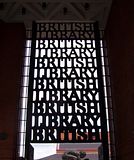
The building was designed to look like a cruise liner ship. The architect, Professor Sir Colin St John Wilson served in the Royal Navy during WWII. The Library was designed with the preservation of the book in mind. There is a 75-feet deep underground tower block, used as library storage. In this space, there are four floors of climate-controlled shelving and a water tank system. It is the largest public building constructed in the UK in the 20th century.
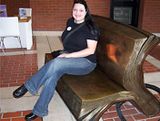
The library serves as the National Library of the United Kingdom of Great Britain and Northern Ireland. The Westminster Parliament funds the library, making the central government their parent institution. In 1941, during the German bombing of London library lost 225,000 items. Until 1997, a majority of the collection was housed in the British Museum . The British Library is currently a “working library” with 2,300 workers. The British Library is the largest research library in Britain.
The British Library serves three principal statutory obligations:
1. To serve as the national bibliographic depository.
2. To preserve materials.
3. To provide access to the collection.
There are 35 million books on site. Sixty percent of the total collection is in London with the rest in West Yorkshire . In addition to books, the library holds manuscripts, maps, newspapers, magazines, prints and drawings, music scores and patents. There are approximately 170 million items, adding three million a year. The library processes 8,000 new items a day. Twenty percent of the collection is restricted. Legally, publishers must send one copy of each book published in the UK and Ireland within one month from publication. There are 800 miles of shelves. The library still needs to find space for all of these items. The largest item in the collection is the Klencke Atlas of the world from 1660. King George III’s personal collections were gifted to the library in 1820 and were intended to be on public display. There are 67,000 items in “The King’s Library,” which is displayed in a beautiful glass tower in the middle of the library.
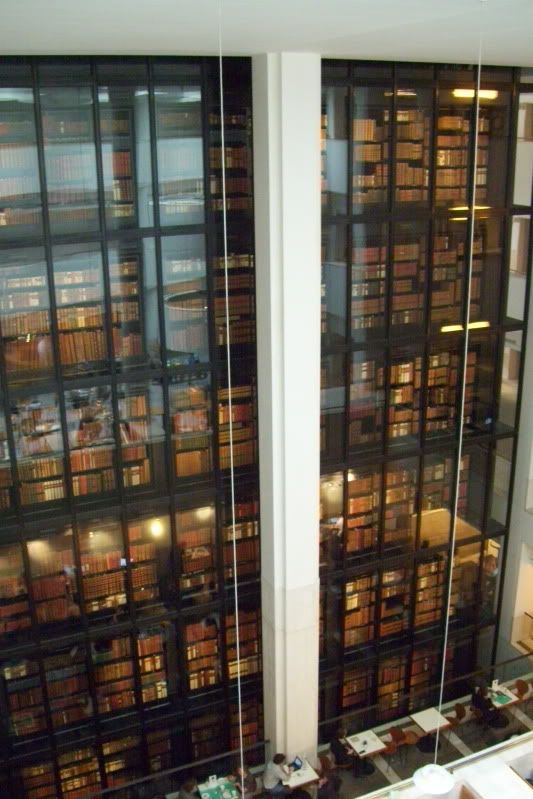
To gain a Reader’s Pass to access the collection you must have proof of ID and address. Before requesting the book, you must be able to provide the title and British Library shelf mark. You can search this information using the catalog, which is available worldwide. There are 11 Reading Rooms in the library, where patrons receive materials ordered through the catalog. Areas of research for Reading Rooms include Humanities, Manuscripts/Rare Books & Music/Maps, Asian & African Studies, Social Sciences, Science, Sound Archive and Business & IP Centre. Delivery of items from storage areas to Reading Rooms normally takes 70 minutes. Thirty-five percent of British Library readers are overseas researchers. The library has distributed 700,000 passes since 1997. The passes expire in one to three years. There are currently 114,000 “live” readers.
Surprisingly, to maximize space in the underground storage, the books are classified by size. They also use Dewey Decimal System for the small amount of material in the Reading Rooms. All materials are non-circulating, meaning they can be viewed in the Reading Rooms only. Typically, the library retains only one copy of each book. There are efforts to digitize at the library. They are digitizing 75,000 pages a day.
The library uses an integrated catalog system. The Automated Book Retrieval System (ABRS) prints two slips, one slip holds the place on the shelf, the other slip goes into the book. With the Mechanical Book Handling System (MBHS), the book goes onto the scan tray and down the conveyor belt. There are one and one fourth miles of conveyor belt.
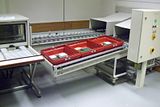
Items of interest in the Sir John Ritblat Gallery included Shakespeare’s First Folio, Gutenberg Bible, Codex Sinaiticus (1,700 years old), Magna Carta, Leonardo da Vinci's Notebook, Lewis Carroll's Alice 's Adventures Under Ground, Geoffrey Chaucer's Canterbury Tales, poetry of Sylvia Plath and Beatles manuscripts.
The striking tapestry on the west wall of the entrance hall is titled ‘If Not, Not’ by R.B. Kitaj, 1976. I was able to get a handout on the tapestry from the information desk. The tapestry shows colorful literary references woven by master weavers of the Edinburgh Tapestry Company.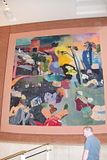
The bookstore at the British Library was an excellent resource on British children’s literature. The staff was as knowledgeable as the experienced librarians, and they suggested the Ultimate Book Guide as a good source on British children’s literature. I also spotted more children's and adult editions of Harry Potter, in better condition than the public library books! Note the difference in title from the American edition Harry Potter and the Philospher's Stone.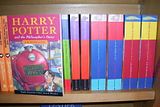
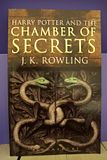
Memorable quote: “Our job is to know where it is and how to make it available.”
Overall, I loved the larger-than-life feel of the British Library. We were lucky enough to get a glimpse of a couple of large reading rooms and was inspiring to see all those people quietly researching. The library also had a bookstore, gift shop, history gallery, art gallery, café, restaurant and rooftop garden. It was like a librarian’s Disneyland!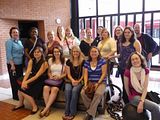
Platform 9 ¾
I went to nearby King’s Cross Station in search of Platform 9 ¾ from Harry Potter. I found construction work in the actual space between platforms 9 and 10. I also found this helpful sign: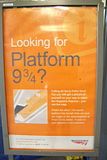
Around the corner I found the designated site for the magical portal.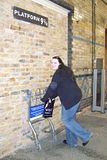
Later, the LIS grad group got our picture at Platform 9 ¾
In the movies, Platform 9 ¾ was actually filmed between platforms 4 and 5:
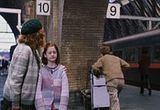
photo from findhogwarts.com
Next to King's Cross Station is St. Pancras Station. In Chamber of Secrets, the exterior of St. Pancras station is used to represent King’s Cross Station in the shot where Ron and Harry fly the flying car overhead. 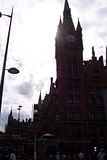
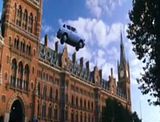
photo from findhogwarts.com
Thursday evening the entire British Studies Program group was invited to our local pub, Stamford Arms for a Welcome Reception. I escaped just in time for them to start karaoke. I went to nearby Southbank Centre to see hip hop and spoken word as part of the London Literature Festival 2009.
London Liming: where spoken word meets carnival. Highlights included MC Rinse (of Scotland), MC Spaceape, poet John Agard (of Guyana) and cellist Ayanna Witter-Johnson. I recorded video of some of the performances. The venue was extremely hot, but it was great to get a glimpse of London hip hop.
Pictures from British Library, Platform 9 3/4 and hip hop!




When I click on to view more picture the link doesn't work.
ReplyDeleteIs it fixed? I also recommend using the Slideshow link at the top of each blog to view the pix.
ReplyDeleteYes, it worked when I tried it today.
ReplyDelete